Length of stay at the cavernous barracks on Randall’s Island will depend on the availability of other housing options, and the efforts of New York City officials who have pledged to streamline exits from the emergency shelter facility.
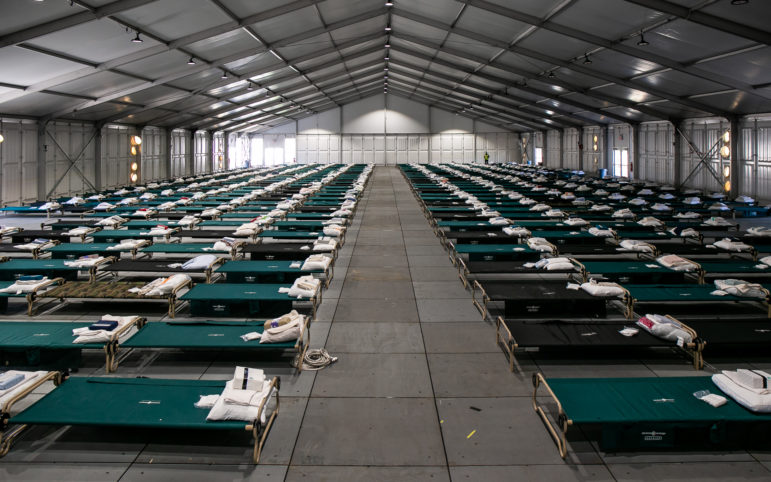
Adi Talwar
The city’s emergency shelter for asylum seekers has capacity for roughly 1,000 people, officials said.Hundreds of recently arrived immigrants will begin checking in Wednesday to a cavernous new barracks on Randall’s Island, where they will sleep head-to-toe on thin cots as they consider their next move.
The duration of their stay will depend on the availability of other housing options and the efforts of New York City officials who have pledged to streamline exits out of the temporary tents.
The newly constructed facility was initially billed by Mayor Eric Adams as a short-term way station, with a goal of moving people on to other destinations—locations outside the five boroughs, traditional homeless shelters or, ideally, into permanent housing—in about four days.
But at a press tour of the tents Tuesday, top administration officials conceded that recently arrived immigrants who travel to New York City after crossing the Southern Border may stay in the tents for an indefinite period of time.
“There is no limit to how long people that are seeking asylum can stay in this facility,” said Dr. Ted Long, an administrator at the city’s Health + Hospitals Corporation, which operates the shelter along with the Office of Emergency Management (OEM). “Our goal, if you can identify with us where you want to go, is to get you there as quickly as possible. But our focus is to get you where you want to go and not to limit the number of hours.”
The city will “move mountains” to help the residents identify and travel to other locations, Long said during a tour of the facility Tuesday.
A list of policies and procedures for the site—referred to as a Humanitarian Emergency Response and Relief Center (HERRC)—shared with City Limits also suggest the city expects stays to last longer than the four-day goal.
“You have the right to remain at the facility until otherwise notified by HERRC staff, provided that you comply with all Facility rules,” the document states, adding that staff can eject residents with seven days’ notice.
So far, about 18,600 recently arrived immigrants and asylum-seekers, many of them from Venezuela, have come to New York City and sought temporary shelter this year, according to City Hall.
About 12,700 remain, and their presence—combined with rising rents, the end of eviction protections, deep economic inequities, shrinking housing supply, discrimination and obstacles to permanent apartments for low-income New Yorkers—has fueled a surge in the city’s Department of Homeless Services (DHS) shelter census. The DHS shelter population reached an all-time high around 65,000 this month.
The increase in newly arrived immigrants seeking temporary shelter is a unique phenomena, driven by an exodus from Venezuela where an autocratic regime has decimated the economy and cut off diplomatic ties to the U.S. Many of the newly arriving immigrants lack connections in the five boroughs and have instead turned to the shelter system for immediate support.
Republican governors in border states have commissioned buses for migrants to travel to New York City in a political stunt intended to push stricter immigration policies. Perhaps more commonly, church groups, nonprofits and Democratic mayors have also helped asylum-seekers reach the city, an historic beacon for immigrants.
Faced with a new challenge, Adams said the city has no choice but to open a refugee camp-style site to provide beds—a contention challenged by other elected officials and advocates.
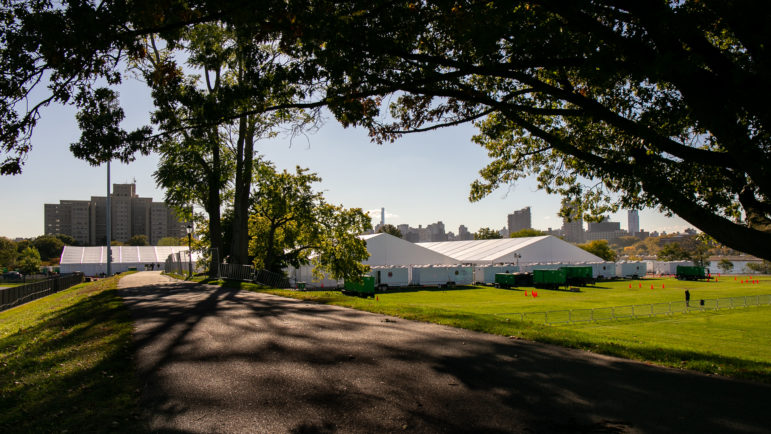
The temporary facility was erected in about two weeks after a move from a flood-prone Orchard Beach parking lot. The city aims to transport single men who arrive by bus at the Port Authority terminal to the Randall’s Island facility, constructed with hard plastic walls, black plastic flooring and taut tarp roofing.
The structure features a network of interconnected tents, each serving a different function.
New arrivals will first enter an intake tent and meet with a case manager to register for a bed or share information about their destination of choice. During the tour Tuesday, hundreds of workers held PowerPoint presentation print-outs at a staff training inside one tent. OEM Commissioner Zachary Iscol said 90 percent of case managers will be bilingual.
Residents will then be tested for COVID-19 and shown to one of 449 cots arranged in tight rows inside one tent. The site has capacity for roughly 1,000 people, officials said.
Trailers with toilets and showers are parked outside the tents, along with a separate tent lined with washing machines and dryers. In one tent, a folding table with a dozen telephones will allow residents to connect with family or friends if they do not have a cell phone.
A large cafeteria features at least 60 folding tables, while another tent offers a small recreation area, with a handful of televisions and couches. One television in the staged area aired the Rosetta Stone language-learning program. A decorative basket on the floor next to a couch contained two magazines, including a 2021 fantasy football primer.
The “Sleeper Unit” tent resembles New York City’s massive men’s shelters of old, but the new facility will function apart from the traditional Homeless Services system and outside court-ordered oversight rules that allow attorneys and policy experts to inspect conditions. That access is part of the city’s unique right-to-shelter policies established in the wake of a landmark 1979 court ruling.
But no such oversight will exist at the new camp, Deputy Mayor Anne Williams-Isom said Tuesday. She likened the facility to other shelter systems operated by the city, including Department of Housing Preservation and Development (HPD) emergency shelters, where thousands of New Yorkers stay each night and are not counted in the DHS census.
“We don’t consider this a traditional homeless shelter. We consider this an emergency relief shelter,” Deputy Mayor Anne Williams-Isom told reporters outside the tent, reiterating past statements made by Adams. “So we’re protecting it under those regulations that we’ve set up for ourselves, and it’s a similar way that we would if it was a hurricane or an emergency or someone had a fire in the house.”
That arrangement has raised concerns among advocates for the rights of homeless New Yorkers, including the Legal Aid Society and Coalition for the Homeless, the two court-appointed monitors of the DHS system. Shelters run by nonprofits that contract with DHS must adhere to strict standards, including the distance between beds, that are clearly not upheld at the HERRC site.
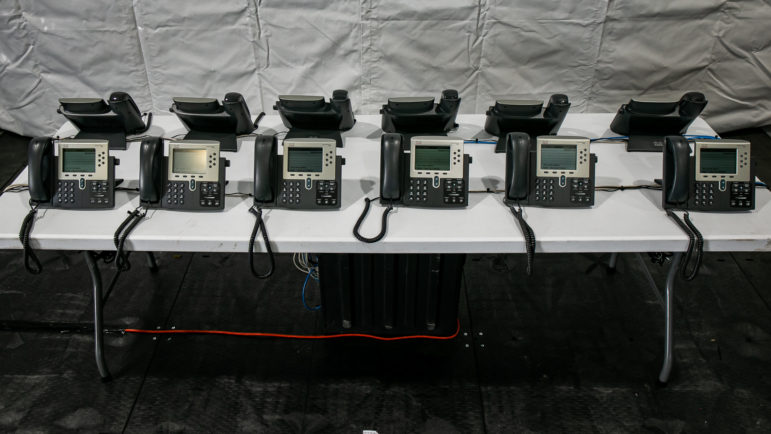
In one tent, a folding table with about a dozen telephones will allow residents to connect with family or friends if they do not have a cell phone. 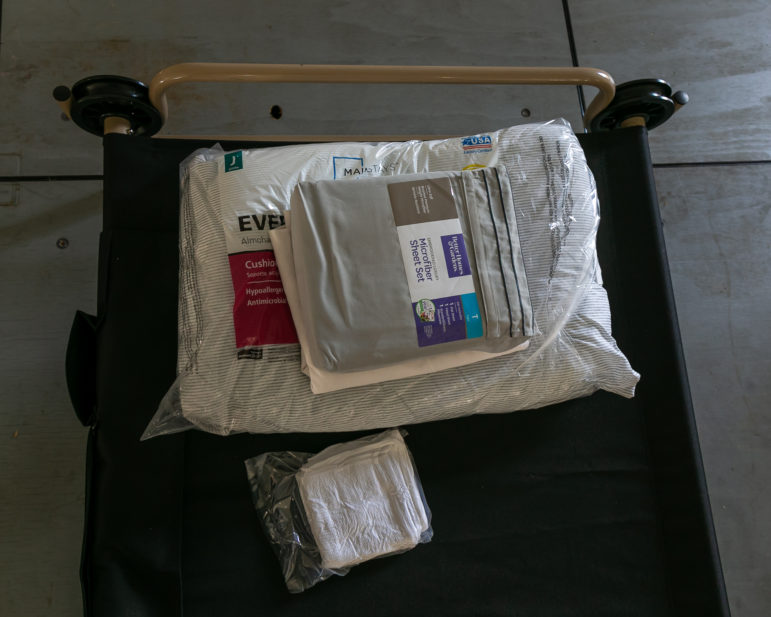
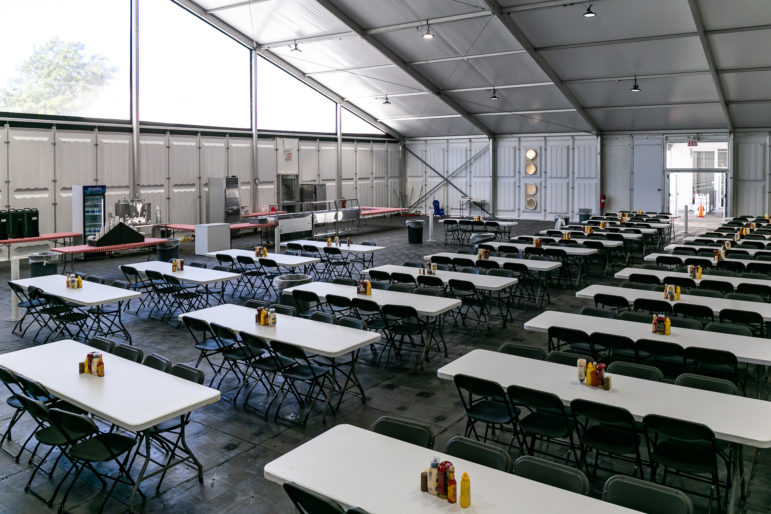
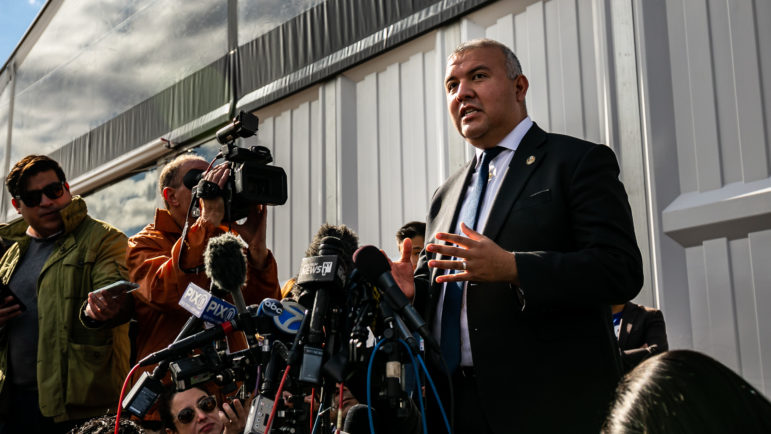
Mayor’s Office of Immigrant Affairs Commissioner Manuel Castro speaks to the press the day before the tents facility opened. 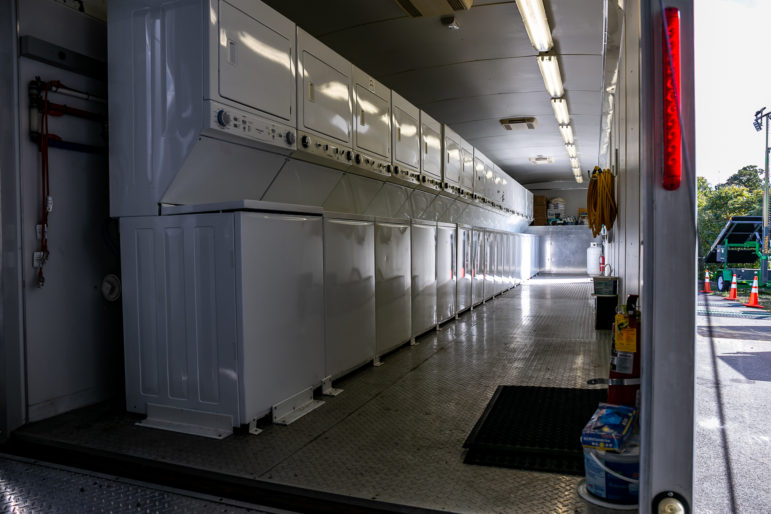
Trailers with toilets and showers are parked outside the tents, along with a separate tent lined with washing machines and dryers. 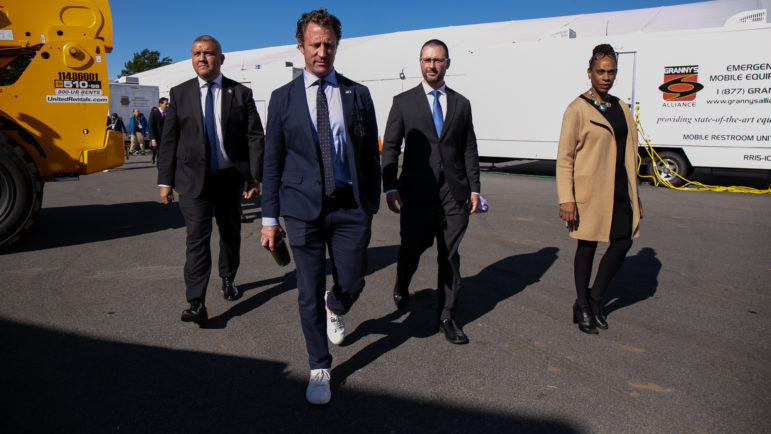
OEM Commissioner Zach Iscol said 90 percent of case managers will be bilingual. 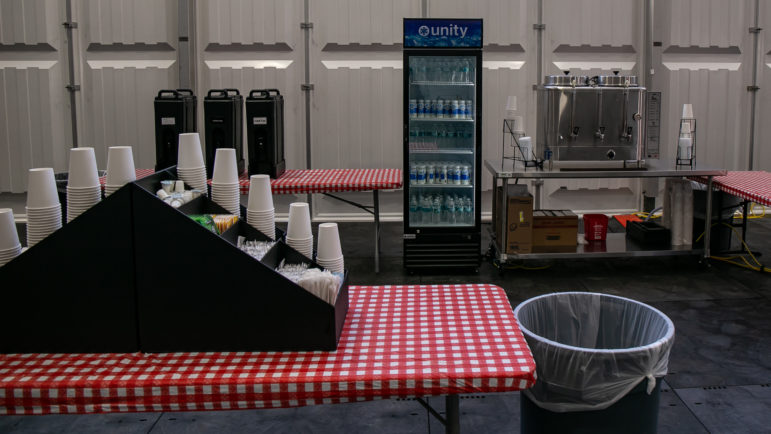
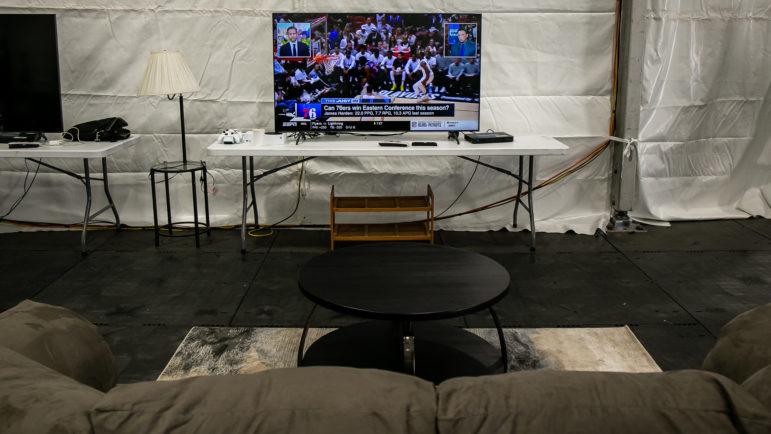
“We don’t think the HERRC tents are a good idea, and the standards enshrined in court orders are rooted in common sense about how shelters can be safely operated,” said Coalition for the Homeless Policy Director Jacquelyn Simone. “But whether the HERRCs are illegal is a different question than whether they are misguided.”
Craig Hughes, a social worker and organizer with the Safety Net Project of the Urban Justice Center, criticized the new facilities as something of a shadow shelter system and a “creative and inhumane way to get around the right to shelter.”
“Sheltering people in a tent with hundreds of cots crammed together during a pandemic, just as winter approaches, is a particularly frightening path for the city to take and it is not what [the] city’s right to shelter requires,” Hughes said. “Instead of using the vast housing resources open to the administration to get homeless New Yorkers into housing, the city will be bussing asylum seekers to Randall’s Island to sleep in a tent without any tangible support to get into housing.”
Several elected officials, including City Council Speaker Adrienne Adams, have also slammed the tent plan, calling instead for the city to rent additional hotel rooms and focus on streamlining moves out of DHS shelters. The city is now using more than 45 hotels as temporary shelters—including one used as a HERRC for families—but Adams has said a low vacancy rate limits that option. He also pledged to introduce a plan for easing moves out of homeless shelters in the coming weeks.
Still, Hotel Association of New York City President Vijay Dandapani told City Limits Monday that there are 17,000 rooms in hotels that are closed across the city.
But the city “can’t force the owners” to open the hotels to homeless New Yorkers, Dandapani said. “Each one has a different reason why they remain closed.”









One thought on “First Look at NYC’s 1,000-Cot Barracks for Asylum Seekers ”
By December, you will write about the lack of heat in these new, airy buildings. Maybe sooner, since they are on the river. This barracks system doesn’t look like a good plan. Sometimes it is hard to get stuff done in a way that ensures success.